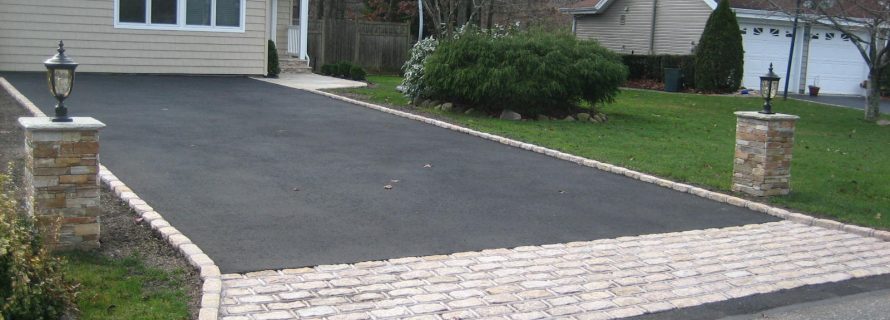How To Prep Your Driveway For Any Weather

Most driveways cost thousands of dollars to install—if you’re a homeowner, you want to keep your significant investment in good shape for years. Thankfully, preparing and maintaining your driveway doesn’t have to be expensive or take up a lot of your time. Here are five things you should do both before and after the concrete is poured to keep your concrete driveway in pristine condition for as long as possible.
Pros of Concrete Driveways
Most driveways you see on commercial and residential properties these days are made using concrete. There are several benefits to installing a concrete driveway instead of other materials include:
- Easy to maintain. If the wet mixture is prepared and cured properly, concrete can last for decades without breaking down. You should reseal your concrete surface every few years, but maintaining concrete is a simple process that doesn’t require a lot of time.
- Durable. Well-maintained concrete can withstand much more weight and stress than stone and other construction materials.
- Attractive. Thanks to decorative options like faux-tiles and colored concrete, concrete can actually be visually appealing for various design tastes.
- Cheap. Since concrete only has a few ingredients, it’s often much cheaper to buy in bulk than other building materials like stone.
Check the Foundation
Your driveway’s foundation—aka the soil underneath concrete slabs—has a big impact on your concrete driveway’s lifespan. If you pour concrete on a weak foundation or on top of unstable soil, it can cause the driveway to degrade and break sooner.
Earthquakes, frost heave, and ground settling can also damage any concrete resting on the surface. Making sure your concrete driveway is built on a solid foundation will keep the driveway sturdy and functional for longer.
Check for Cracks
If your concrete driveway has large surface cracks, it’s important to get those fixed and filled as soon as possible. The larger those cracks become, the harder it is to fix, and then you’ll have to pay more to repair the broken areas. Additionally, these cracks may be indications of larger problems that are worth looking into.
For newly poured concrete driveways, don’t underestimate the importance of the curing process. It takes weeks (and even months for larger projects) for concrete slabs to cure completely. Putting too much weight on still-curing concrete can weaken the internal structure and cause your driveway to break down prematurely. Checking the surface throughout the curing timeline and every so often afterwards will keep you aware of any problem areas so you can keep an eye on the developing cracks.
Buy The Right Driveway Salt
Every winter, streets, sidewalks, and driveways are covered in salt to keep them from getting icy. But that salt can actually damage concrete over time. Since rock salt de-icers are corrosive material, it breaks down concrete surfaces much faster than other types of de-icers. Make sure you get a de-icer without calcium chloride (salt) as the primary ingredient.
You should also not use salt as a de-icer on driveways that are less than a year old. This will damage the still-curing surface and cause significant spalling and weakening of the internal structure. If your concrete driveway is under that one year mark, use sand and kitty litter to keep your driveway and other paths slip-proof during the cold months.
Check The Drainage
Good drainage along your driveway will keep water from getting inside the concrete and weakening the internal structure. If water pools to a specific area along a driveway, it can cause a lot of trouble when winter comes. Any water trapped inside will freeze and cause the concrete to crumble prematurely.
If you are planning on installing a concrete driveway, make sure you have drainage built in before the mixture is poured into the molds. Channel drains are a great option to quickly get water away from the surface so it stays functional for longer. If your already-built concrete driveway doesn’t have a drainage system, you can still install a channel drain, or you can use the trench drain system for proper drainage.
Use The Right Tools
Even though concrete is a durable construction material, it can still break. Tools like snow blowers and shovels can easily cause damage to your driveway surface. Make sure you’re always using undamaged shovels and tools on your driveway surface to avoid chipping and damage.
Bottom Line
When you spend your money and time to make your home the best it can be, the last thing you want is for it to be ruined by winter weather. As the seasons start to change and the temperatures start to drop, add your driveway to your list of home winterization tasks. You won’t regret it!
About The Author: As a professional blogger and business consultant, Gavin helps emerging leaders, executives, and budding entrepreneurs define their goals, communicate their brand message, and navigate the ever-evolving business landscape. In his spare time, he loves to blog about all things home improvement as he works on his many half- finished home DIYs.
- Additions and New Construction
- All Exteriors
- Alterations
- Basements
- Bathrooms
- Customer Service
- Customer Stories
- Decks
- Design & Planning Show
- DIY
- Doors
- Educational Resources
- Extreme Makeover Home Edition
- Fashion Show
- General Remodeling
- Green Living
- Handyman Home Services
- Home Decor
- Home Entertainment
- Home Improvement
- Home Improvements
- How to Tips
- In The Community
- Off-the-Wall Remodeling Stories
- Remodeling
- Resources
- Roofing
- Siding
- Social Media
- Sunrooms
- Tips & Tricks
- Trends
- Windows

